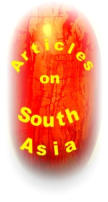
.





‘Knowledge is power’



World’s
encyclopedic
knowledge
compacted
in
your
hand





Please raise the vol to listen to the
lady airing awe @ the SINGLE author encyclopedia
You may also like:
Future humans to look like Pokemon characters sound
Saudi writer urges groping of women to make them stay at home
?DNA Proof of 6" Tall Extraterrestrial: 2013
Sixth sense technology that'll empower humanity -TED lecture
Data crunching Indian recipes
Chefs in the West like to make dishes with ingredients that have overlapping
flavors. But not all cuisines adhere to the same rule. Many Asian cuisines have
been shown to belie the trend by favoring dishes with ingredients that don't
overlap in flavor. And Indian food, in particular, is one of the most powerful
counterexamples.
Researchers at the Indian Institute for Technology in Jodhpur crunched data on
several thousand recipes from a popular online recipe site called
TarlaDalal.com. They broke each dish down to its ingredients, and then
compared how often and heavily ingredients share flavor compounds.
The answer? Not too often.
Here's an easy way to make sense of what they did, through the lens of a
single, theoretical dish. Say you have a dish with 4 different ingredients, like the
one below:

Each one of those ingredients has its own list of flavor compounds. And any two of
those ingredients' lists might have some overlap. Take the coconut and onion, for
instance. We can all agree that these two things are pretty different, but we can also
see (in the Venn diagram below) that there's some overlap in their flavor make-up.
(Ignore the math symbols.)

You could create the same diagram for all the ingredients with overlapping
flavor compounds, as in this diagram. There are six that have overlap.
(Again, ignore the math.)
Empowering Book Newsletter






WOMEN’S POWER: ITS PAST, ITS PRESENT, ITS FUTURE: FEMOCRACY
WEB PAGES
OUR OFFERING
UPLOADED ITEMS
OUR EMAIL
kri200@womenspowerbook.org
QUESTION




















